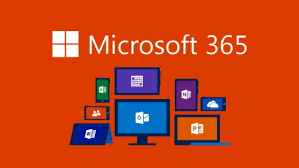The Impact of Modern IT Infrastructure on Student Learning

In today’s digitally driven educational landscape, the role of modern IT infrastructure in shaping student learning is more critical than ever. As schools embrace technology to enhance academic outcomes, the foundation of these efforts lies in building and maintaining a robust and adaptable school IT infrastructure. This infrastructure underpins everything from interactive learning environments to secure data access, offering students a dynamic and engaging educational experience. With reliable systems in place, schools can streamline operations, improve collaboration, and provide equal access to digital resources. This article explores how modern IT infrastructure impacts student learning and why schools must prioritize technology investments.
Enabling Access to Digital Learning Resources
A key benefit of a strong school IT infrastructure is the ability to provide students with seamless access to digital learning tools and resources. Learning management systems (LMS), virtual classrooms, and cloud-based educational platforms rely heavily on stable networks and efficient hardware. When the infrastructure is optimized, students can engage with multimedia content, online assignments, and educational apps without disruption. This access fosters independent learning, promotes research skills, and supports various learning styles.
Whether students are in classrooms or learning remotely, consistent connectivity is essential. Devices such as laptops, tablets, and smartboards must connect effortlessly to the school’s network. A well-structured IT setup ensures that bandwidth is sufficient for multiple users, reducing lag and improving the overall learning experience.
Enhancing Collaborative Learning Environments
Modern education emphasizes collaboration and group-based learning. Through digital platforms, students can work on shared documents, join discussion forums, and participate in group projects regardless of their physical location. A reliable school IT infrastructure ensures these tools function efficiently and are always available when needed.
Moreover, integrated communication tools like Microsoft Teams or Google Workspace for Education allow real-time interaction among students and teachers. These platforms promote communication, teamwork, and peer learning. With well-maintained infrastructure, educators can easily facilitate video conferences, assign collaborative tasks, and monitor student engagement.
Supporting Personalized Learning
Every student learns differently, and modern IT systems allow schools to cater to individual learning needs more effectively. School IT infrastructure enables personalized learning by supporting adaptive educational software that adjusts to students’ progress and learning pace. These programs offer tailored content, interactive quizzes, and feedback that help students grasp complex topics.
Data analytics tools can track student performance and provide insights into areas needing improvement. Educators can use this data to personalize instruction, address learning gaps, and create intervention strategies. Without a strong technological backbone, deploying and running these tools effectively would not be possible.
Improving Teaching Efficiency and Innovation
A modern IT infrastructure doesn’t just benefit students—it also empowers teachers. Educators can leverage a range of digital teaching tools such as smart projectors, virtual labs, and digital whiteboards to deliver interactive and engaging lessons. Lesson planning, grading, and content distribution become more efficient with technology.
Cloud-based storage allows teachers to access teaching materials anytime, anywhere, promoting flexibility and collaboration among staff. Moreover, professional development opportunities via webinars, online courses, and virtual conferences are more accessible with proper infrastructure in place. Schools with reliable IT support can also experiment with innovative practices like flipped classrooms or gamified learning.
Ensuring Data Security and Student Privacy
As schools adopt more digital solutions, the security of student data becomes a priority. A comprehensive school IT infrastructure includes cybersecurity measures that protect sensitive information from breaches, unauthorized access, or cyber threats. Firewalls, encryption protocols, antivirus software, and secure user authentication are vital components.
With increasing incidents of data breaches in educational institutions, schools must adopt proactive security policies. IT support providers like CSLN Group specialize in ensuring cybersecurity for educational environments. Their managed services help safeguard student records, financial information, and academic data, allowing schools to operate confidently and securely.
Facilitating Remote and Hybrid Learning
The COVID-19 pandemic underscored the need for flexible learning models. Remote and hybrid learning are now integral parts of the education system. To support this shift, schools must invest in reliable infrastructure that ensures uninterrupted access to virtual classrooms, digital content, and remote assessments.
A robust school IT infrastructure includes high-speed internet, virtual private networks (VPNs), and cloud-based platforms that students and teachers can access from anywhere. Real-time communication tools and content management systems become essential for lesson delivery and classroom interaction. Schools with outdated systems struggle to provide the same level of service, which can negatively affect student learning.
Streamlining Administrative Operations
Effective IT infrastructure extends beyond the classroom. It simplifies administrative tasks such as enrollment, attendance tracking, report generation, and parent-teacher communication. Automation of these processes frees up valuable time and resources that can be redirected toward teaching and learning.
School management software integrated with infrastructure systems helps track academic performance, generate reports, and communicate with stakeholders efficiently. A reliable infrastructure ensures these systems are always up and running, minimizing downtime and enhancing overall school productivity.
Promoting Digital Literacy and Future Readiness
Digital literacy is a fundamental skill in the 21st century. By embedding technology into daily learning, schools help students become confident digital citizens. A strong IT infrastructure enables exposure to essential tech skills such as coding, data analysis, and online research.
Technology-integrated education encourages students to explore innovative problem-solving methods and prepares them for technology-driven careers. Through hands-on experience with modern tools and platforms, students gain the skills required to thrive in higher education and the workforce.
Minimizing Disruption and Downtime
System crashes, network failures, and outdated equipment can severely disrupt learning. A proactive approach to IT infrastructure ensures minimal downtime and uninterrupted access to educational tools. Regular maintenance, system updates, and responsive IT support are essential components.
CSLN Group offers schools and colleges dedicated managed IT services, including proactive monitoring and quick resolution of technical issues. Their expertise ensures that schools stay ahead of potential disruptions and maintain consistent educational delivery.
Encouraging Equity and Inclusion
An optimized school IT infrastructure plays a vital role in bridging the digital divide. When schools provide equitable access to devices, internet, and educational tools, they create an inclusive learning environment for all students, regardless of socioeconomic background.
Schools can implement programs that lend devices to students in need or offer internet access support. Cloud-based platforms ensure that students with disabilities can use assistive technologies for learning. By prioritizing inclusivity in infrastructure planning, schools can ensure every student has an equal opportunity to succeed.
Conclusion
The impact of modern IT infrastructure on student learning is undeniable. From enabling personalized education to fostering digital skills, a well-developed school IT infrastructure forms the backbone of contemporary education. With the rise of remote learning, cloud technologies, and data-driven teaching methods, investing in strong infrastructure is not a luxury—it’s a necessity.







